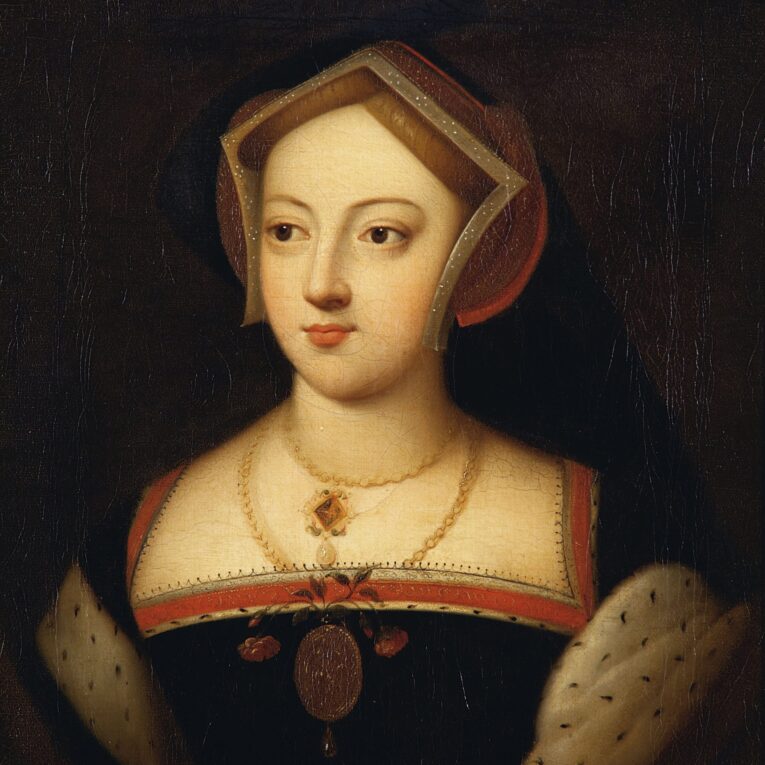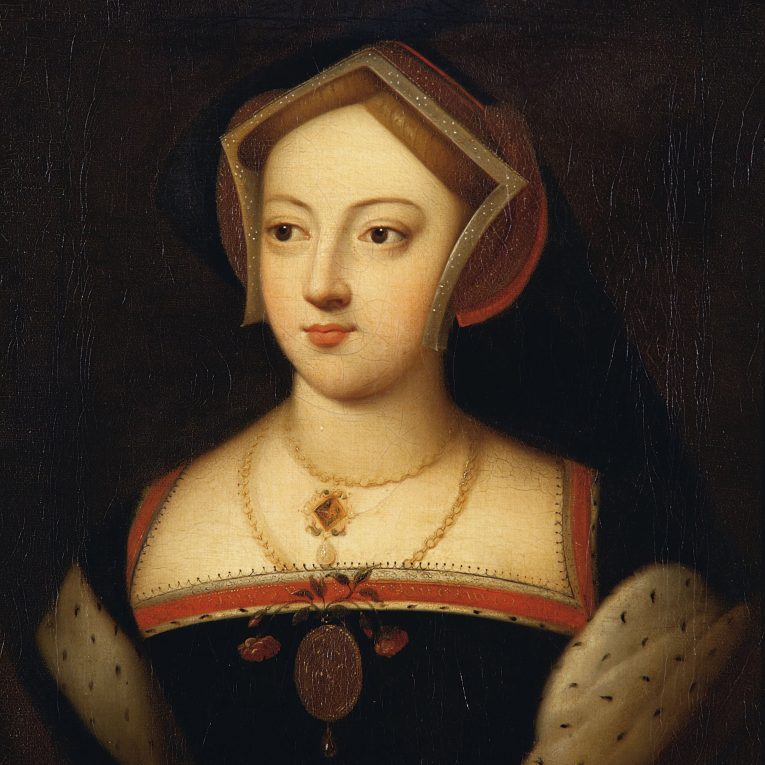

New research by the Jordaens Van Dyck Panel Painting Project has been announced that identifies an unlabelled portrait in the Royal Collection as Mary Boleyn; a copy of which hangs at Hever Castle, Mary’s childhood home.
Since William Waldorf Astor restored Hever Castle from 1903, two portraits of the Boleyn sisters – Anne and Mary – have hung in the Castle’s magnificent Inner Hall. However, historians had long disputed that either portrait was labelled correctly.
The portrait of Anne Boleyn was painted from a sketch by the famous court artist Hans Holbein; however, this was only labelled as ‘Anne Bullen’ in the 17th century.
The portrait of Mary Boleyn, similarly inscribed, was held to be after Holbein but had long been rejected on the basis that there was no surviving original of the portrait and that the extant examples were much later in origin.
It was also rejected on the basis that the sitter was wearing ermine fur, which some historians had suggested Mary would have been exempted from wearing owing to the strict sumptuary laws which governed clothing by status. However, research by Maria Hayward in 2009 appeared to contradict the idea that Mary would have been precluded from wearing the fur, with no sumptuary exemptions for the fur being made since 1463. As Susan Higginbotham pointed out, Mary would have been permitted to wear the fur as her husband, William Carey, was an Esquire of the Body. This earlier research re-established the possibility that the portrait could indeed be Mary.
Now, the Jordaens Van Dyck Panel Painting Project has concluded that a version of the portrait in the Royal Collection is of Mary Boleyn. While researching a set of paintings of 17th Century “Beauties” that once decorated the bathroom of Queen Anne at Windsor Castle 300 years ago, the research team were able to identify that the portrait of Mary had once belonged to the set by using dendrochronology (the scientific dating of tree rings to the year they were formed). Mary had been separated from the set of “Beauties” owing to it being the only portrait in the set wearing 16th Century dress. The team were then able to find images of a similar version of the painting with a named inscription from the collection of Lord Wharton, who was a descendant of Mary Boleyn. This inscription matched that of a portrait of Margaret Smith, Mrs Thomas Carey, who married Mary Boleyn’s great-grandson. The research team will be publishing the full details of this exciting discovery of Mary Boleyn, with the full results of their study of the 14 “Beauties,” in a future publication.
The confirmation of Mary’s likeness is a welcome addition to the all too little we know about the “other Boleyn girl”. Eric Ives, the celebrated biographer of Anne Boleyn, once stated that what we know of Mary “could be written on the back of a postcard with room to spare.” We do not know Mary’s birthdate, her place of burial, or when her affair with Henry VIII began and for how long it lasted. We do know that she had two children, which some historians believe one or both were fathered by Henry, although this is heavily disputed. We also know that Mary’s children, Catherine, and Henry Carey, went on to have successful careers at the court of their cousin Elizabeth I, daughter of Anne Boleyn. It is, then, likely that these portraits of Mary – of which we now believe there are twelve known copies – were created by or for the ever-growing descendants of Mary, who flourished due to the successful careers of Mary’s children during the reign of the Boleyn heir, Queen Elizabeth I.
Book your visit to Hever Castle & Gardens.
Within the grounds of the Hever Castle Estate, there are two opportunities for you to stay the night with us.
Hever Castle has played host to many important events and celebrations for over 600 years. In 1903 when William Waldorf Astor set about restoring Hever Castle to its former glory, he added the Astor Wing, to accommodate his family and guests, before creating a lake and the spectacular Italian Garden to house his impressive collection of ancient Greek and Roman statuary.
There are multiple places to eat & drink across the Hever Castle Estate. Select between the Castle & Gardens and Golf Club below to discover more.
Set in the mature grounds of the Hever Castle Estate, Hever Castle Golf Club is a 27 hole Kent golf course that will encourage and inspire all golf enthusiasts.
Set in the mature grounds of the Hever Castle Estate, the Wellbeing Centre consists of five smart treatment rooms.